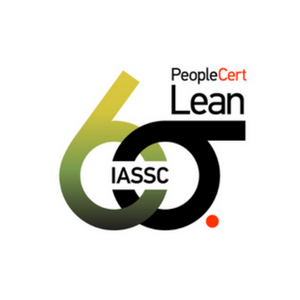The IASSC Lean Six Sigma Body of Knowledge™ is an assembly of a comprehensive set of topics and subject matters that are intended to be representations of the universally and commonly accepted, minimum competencies and core proficiencies requisite of a Lean Six Sigma Black Belt, Lean Six Sigma Green Belt and Lean Six Sigma Yellow Belt.¹
The IASSC Lean Six Sigma Body of Knowledge consists of three publications, including the IASSC Black Belt Lean Six Sigma Body of Knowledge™, the IASSC Green Belt Lean Six Sigma Body of Knowledge™ and the IASSC Yellow Belt Lean Six Sigma Body of Knowledge™. These well-established IASSC Standards are diversely recognized as relevant and practical versions of the knowledge expectations of Lean Six Sigma Practitioners. They are used and recognized by thousands of Lean Six Sigma Providers, Institutions and Practitioners. Information pertaining to the origins of the IASSC Body of Knowledge can be reviewed, here.
The IASSC Lean Six Sigma Body of Knowledge consists of primary sections, such as Define, Measure, Analyze, Improve and Control, which are each broken down into sub-categories consisting of individual subject matter topics.
The IASSC Lean Six Sigma Body of Knowledge Standard is an interwoven element to both IASSC Accreditations and IASSC Certifications. IASSC endeavors to ensure that Lean Six Sigma providers and institutions seeking IASSC Accreditation adequately demonstrate their alignment to the IASSC Lean Six Sigma Body of Knowledge in their content coverage, form of training delivery, duration and competency. Full details pertaining to IASSC Accreditation can be reviewed under Accreditation criteria. IASSC Certification Exams are constructed based upon the topics within the IASSC Lean Six Sigma Body of Knowledge. Through proctored examination, candidates are expected to demonstrate that they have an adequate level of competence in the topics defined within the IASSC Lean Six Sigma Body of Knowledge.
The IASSC Lean Six Sigma Body of Knowledge and IASSC Certification Exams target the incorporation and use of the Bloom’s Taxonomy – Revised (2001) model. “Bloom’s taxonomy is a set of…hierarchical models used to classify educational learning objectives into levels of complexity and specificity”². It covers “the learning objectives in [the] cognitive, affective and sensory domains. The cognitive domain list has been the primary focus of most traditional education and is frequently used to structure curriculum learning objectives, assessments and activities”³. “Bloom’s taxonomy serves as the backbone of many teaching philosophies, in particular those that lean more towards skills rather than content” ⁴.
IASSC uses Blooms Taxonomy in an attempt to help define cognitive level benchmarks for each subject matter item contained within the IASSC Lean Six Sigma Body of Knowledge. This helps IASSC to design exam items and assemble examinations that accurately measure candidate knowledge of subject matter. Furthermore, it helps Providers determine the extent to which their curriculum can be taught to cause a desired outcome across various subject matters. Additional information related to IASSC’s use of Blooms Taxonomy can be found here: IASSC and Blooms Taxonomy.
To view and obtain copies of the IASSC Lean Six Sigma Body of Knowledge for Black Belt, Green Belt and Yellow Belt visit the pages below:
The IASSC Black Belt Lean Six Sigma Body of Knowledge
The IASSC Green Belt Lean Six Sigma Body of Knowledge
The IASSC Yellow Belt Lean Six Sigma Body of Knowledge
References:
1 It is not practical to survey and interview every organization and professional involved in Lean Six Sigma as to the content subject matters and methods that are used. In an effort to supply the Industry with a Lean Six Sigma Body of Knowledge that is representative and worthy of being adopted as a viable and practical minimum competency standard, IASSC has employed a variety of techniques to research, survey and garner feedback on the topics taught by various professionals and organizations. The IASSC Lean Six Sigma Body of Knowledge is a voluntarily adopted standard, which by various measures, has been widely accepted across the Industry. Information pertaining to the origins of the IASSC Body of Knowledge can be reviewed here. If you would like to provide your own input on the IASSC Body of Knowledge, please complete the IASSC BoK Survey and we welcome you to contact us.
2 Wikipedia > Blooms Taxonomy > https://en.wikipedia.org/wiki/Bloom%27s_taxonomy
3 Id.
4 Id. (citing Krathwohl, David R. (2002). “A revision of Bloom’s taxonomy: An overview”. Theory Into Practice. Routledge. 41 (4): 212–218. doi:10.1207/s15430421tip4104_2. ISSN 0040-5841; Anderson, Lorin W.; Krathwohl, David R., eds. (2001). A taxonomy for learning, teaching, and assessing: A revision of Bloom’s taxonomy of educational objectives. Allyn and Bacon. ISBN 978-0-8013-1903-7).
